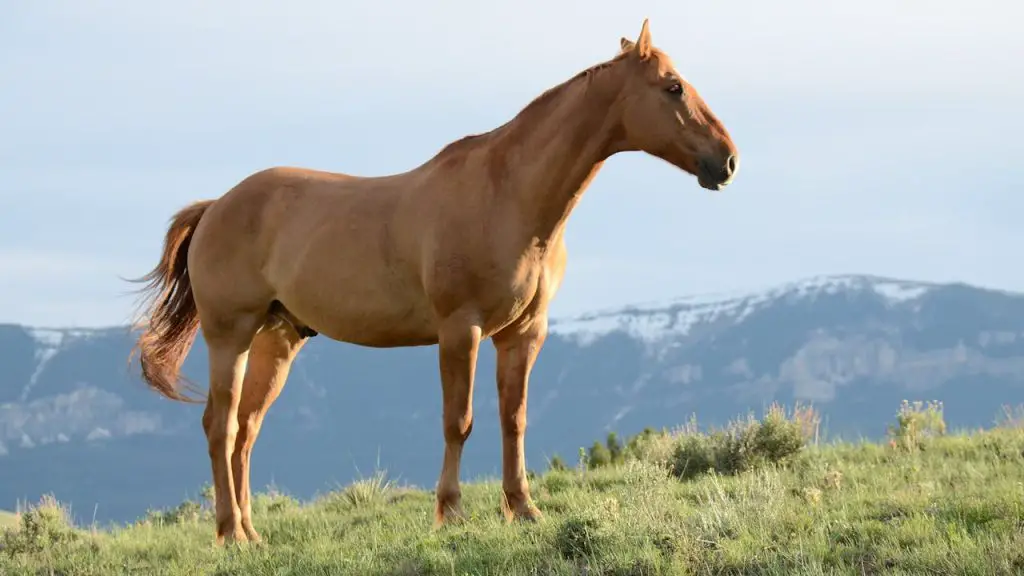A mature female horse is called a mare.
In the vast world of equestrianism, a fundamental grasp of horse terminology is paramount. This knowledge not only fosters effective communication among enthusiasts, breeders, and riders but also deepens the connection with these magnificent creatures.
Basic Horse Terminology

A. Overview of Horse Classification
Horses, majestic beings, are classified based on various criteria, including gender and age. This section provides a foundational understanding of these classifications, setting the stage for a more nuanced exploration.
B. Differentiating Between Male and Female Horses
Diving into the specifics, it’s crucial to discern the differences between male and female horses. Beyond the physical variances, understanding behavioral traits is vital for effective handling and training.
C. Significance of Understanding Terms Related to Horses
The repercussions of miscommunication within the horse community can be profound. Here, we discuss scenarios where a precise grasp of terminology is not just preferable but essential for the well-being of these magnificent animals.
Definition of a Mature Female Horse
A. Introduction to the Term “Mare”
The spotlight turns to mature female horses, elegantly referred to as “mares.” This section delves into the origins of the term and its common usage within both equestrian circles and everyday language.
B. Characteristics of Mature Female Horses
Exploring the physical and behavioral traits that define mature female horses, this subsection paints a vivid picture of the graceful and powerful nature of mares. It also touches upon the evolving characteristics throughout a mare’s life.
C. Role of Mares in Horse Breeding and Equine Activities
From breeding programs to various equine activities, mares play an indispensable role. Understanding their significance adds a layer of appreciation for their contribution to the broader equine community.
Life Stages of Female Horses
There are different life stages of a female horses as listed below :
A. Foalhood and Adolescence
The journey begins with the early stages of a female horse’s life, encompassing foalhood and adolescence. Insights into developmental milestones and the importance of proper care during these formative years are discussed here.
B. Transition to Maturity
As a mare transitions from adolescence to maturity, this subsection unravels the intricacies of physical and hormonal changes. Understanding this stage is crucial for responsible horse care and management.
C. Reproductive Years
Delving into the prime reproductive years of a mare, we explore considerations for successful breeding. This includes insights into managing mares during pregnancy and the delicate process of foaling.
Common Uses of Mares
There are lots of uses of Mares. Some major uses are listed below :
A. Riding and Equestrian Sports
Mares are versatile partners in various riding disciplines. This section explores their roles in competitions, trail riding, and other recreational activities, showcasing the adaptability of these remarkable creatures.
B. Breeding and Reproduction
Beyond their riding capabilities, mares are linchpins in breeding programs. This subsection discusses their role in preserving and enhancing desirable traits within horse populations.
C. Companionship and Therapy
Mares also excel as companions, offering emotional support and therapeutic benefits. From forming strong bonds with humans to contributing to therapeutic riding programs, their role extends beyond the traditional.
Notable Breeds with Strong Mare Characteristics
Now lets see some notable breeds with strong mare characteristics.
A. Breeds Known for Their Exceptional Mares
Certain horse breeds are renowned for producing exceptional mares. This section spotlights these breeds, shedding light on what makes their mares stand out.
B. Unique Qualities of Mares in Different Breeds
Dive deeper into the distinct characteristics of mares across various breeds. Understanding these unique traits adds a layer of appreciation for the diversity within the equine world.
C. Historical Significance of Mares in Certain Breeds
History intertwines with equine genetics. Explore the historical significance of mares in the development of specific horse breeds, recognizing the lasting impact of individual mares.
Conclusion
In conclusion, we revisit the pivotal role of understanding horse terminology. This section summarizes the key takeaways and reinforces the notion that precise communication enhances the overall experience in the equestrian world.
A heartfelt appreciation is extended to the multifaceted roles that mature female horses play. Recognizing and respecting their contributions deepens our connection with these magnificent beings.
The journey into the equine world is vast and ever-evolving. As we conclude, readers are encouraged to delve further into the realm of equine knowledge, with suggestions for continued learning and exploration.
